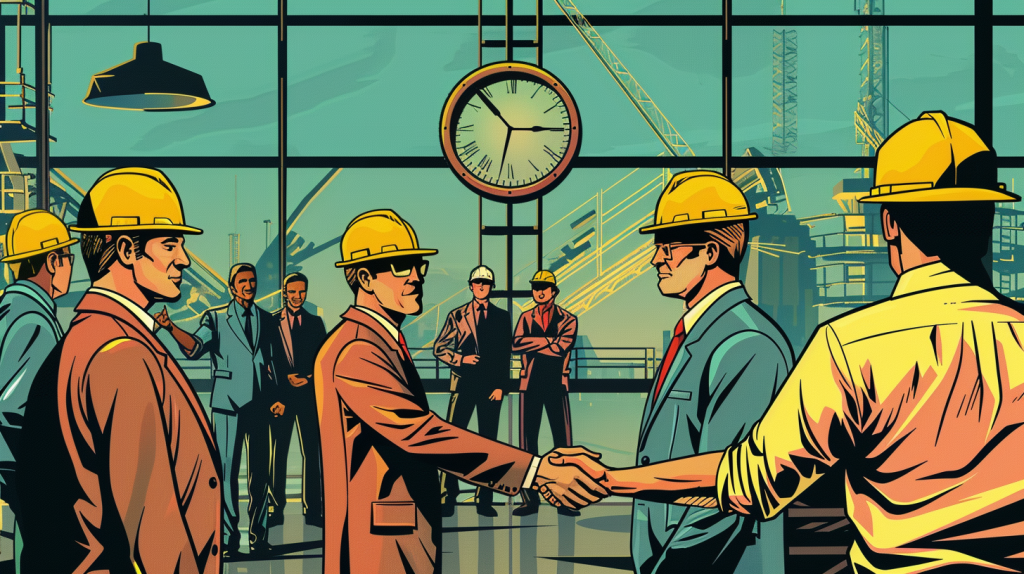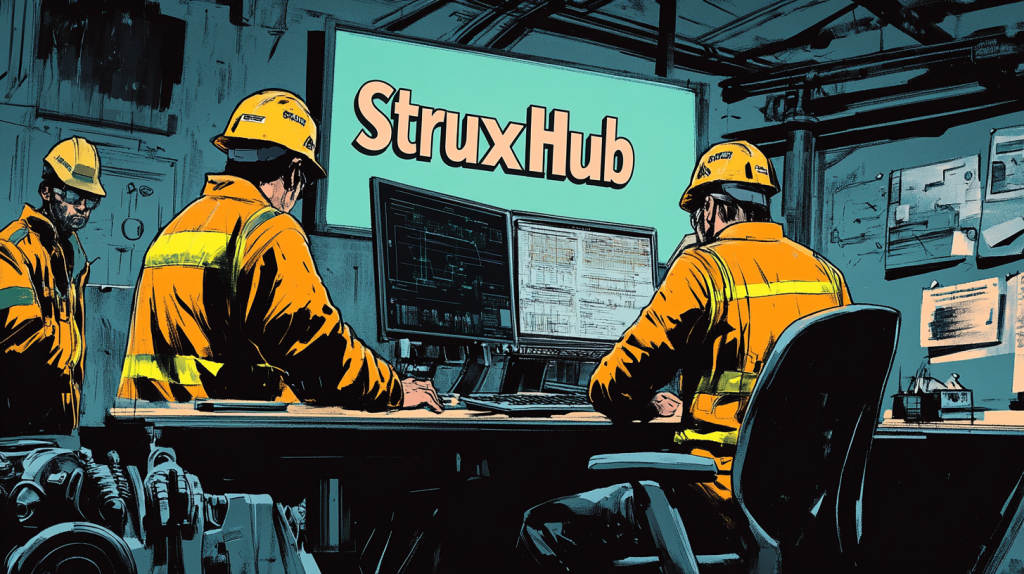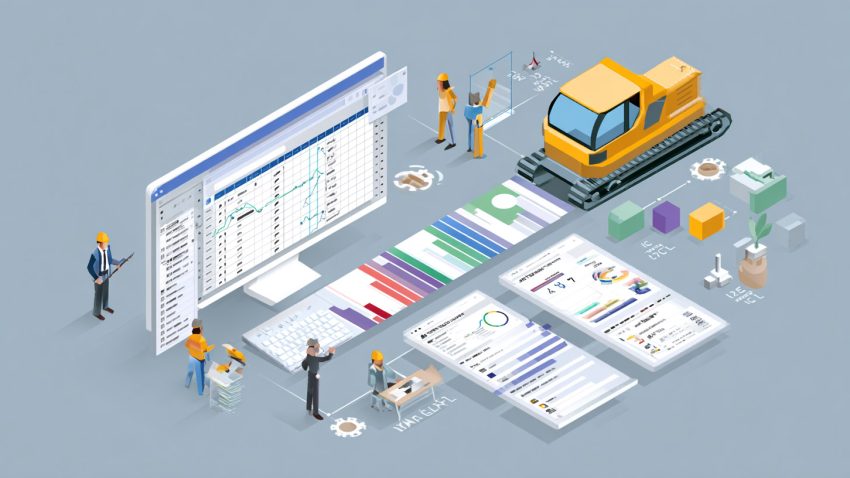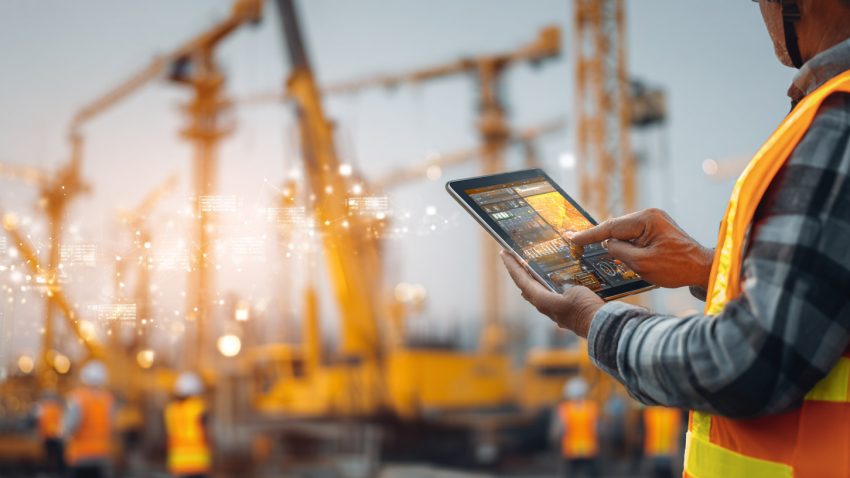How Robotics and AI Are Transforming Large-Scale Solar Farm Construction with Automation and Smart Project Management
Table of Contents:
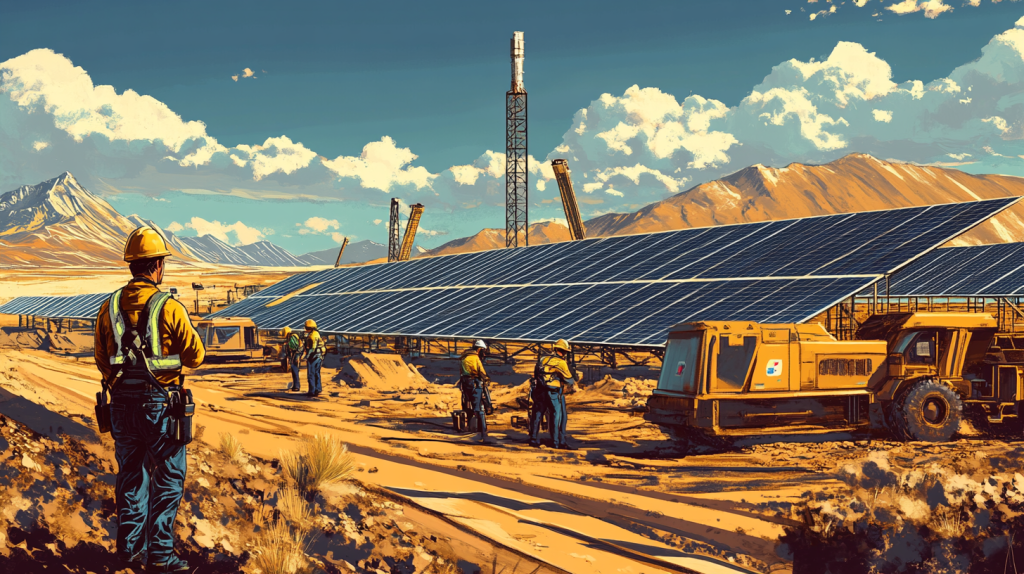
As demand for renewable energy surges, solar farm construction is scaling up to unprecedented levels. Large-scale solar farms require thousands of solar panels, complex electrical systems, and vast land development efforts, all of which demand precision, efficiency, and speed. Traditional construction methods, reliant on manual labor and conventional project management, struggle to meet the increasing demand for faster, more cost-effective solar energy deployment.
The integration of robotics, artificial intelligence (AI), and automation is revolutionizing the solar industry, making construction more efficient, scalable, and cost-effective. AI-driven project management tools optimize scheduling, logistics, and compliance, while robotics enhance panel installation, trenching, and maintenance workflows. These advancements reduce labor costs, improve accuracy, and accelerate project completion timelines—ensuring solar farms come online faster and more efficiently than ever before.
This article explores how robotics and AI are reshaping solar farm construction, covering key benefits, industry trends, and best practices for integrating smart technology into large-scale solar projects.
The Growing Demand for Large-Scale Solar Farms
The global transition to renewable energy is driving massive investment in solar power, with governments and corporations accelerating the development of utility-scale solar farms. These installations are critical for reducing reliance on fossil fuels and meeting sustainability targets, but they also present significant construction challenges.
Key Challenges in Large-Scale Solar Farm Construction
- Site Preparation Complexity – Large solar farms require land grading, foundation work, and environmental assessments before panel installation.
- Labor Shortages – Finding skilled workers for panel mounting, electrical wiring, and maintenance can be difficult, especially in remote locations.
- Logistical Coordination – Managing the transport, assembly, and installation of thousands of solar panels and support structures requires precise execution.
To overcome these challenges, automation and AI-driven project management tools are being deployed to streamline workflows, reduce manual labor dependency, and enhance project oversight.

How Robotics Are Improving Solar Panel Installation
Traditionally, solar panel installation has been labor-intensive, requiring teams to manually position, mount, and secure thousands of panels across vast land areas. Robotics are transforming this process by automating repetitive tasks, reducing installation time, and improving accuracy.
Robotic Installation Technologies in Solar Farms
- Automated Pile Driving Robots – These robots position and secure racking systems that hold solar panels, significantly reducing setup time.
- Solar Panel Placement Robots – Capable of lifting and positioning panels onto racking systems, reducing strain on human workers.
- Automated Trenching Machines – Excavate precise trenches for cabling and electrical connections, improving efficiency and reducing labor costs.
By integrating robotics into solar farm construction, developers can complete projects faster, lower installation costs, and reduce safety risks for workers.
AI-Driven Smart Project Management for Solar Farms
Managing a large-scale solar project requires synchronizing multiple teams, tracking material deliveries, and ensuring compliance with environmental regulations. AI-driven project management software automates scheduling, predicts potential delays, and optimizes resource allocation, ensuring construction stays on time and within budget.
How AI Enhances Solar Farm Construction Management
- Predictive Scheduling – AI analyzes weather patterns and material availability to adjust installation timelines dynamically.
- Automated Workforce Coordination – Optimizes labor deployment, ensuring the right personnel are available when needed.
- Real-Time Performance Tracking – Monitors productivity and equipment performance, allowing teams to address inefficiencies proactively.
With AI-powered construction project management, solar developers can maximize efficiency, minimize risks, and ensure smooth execution from land preparation to grid integration.
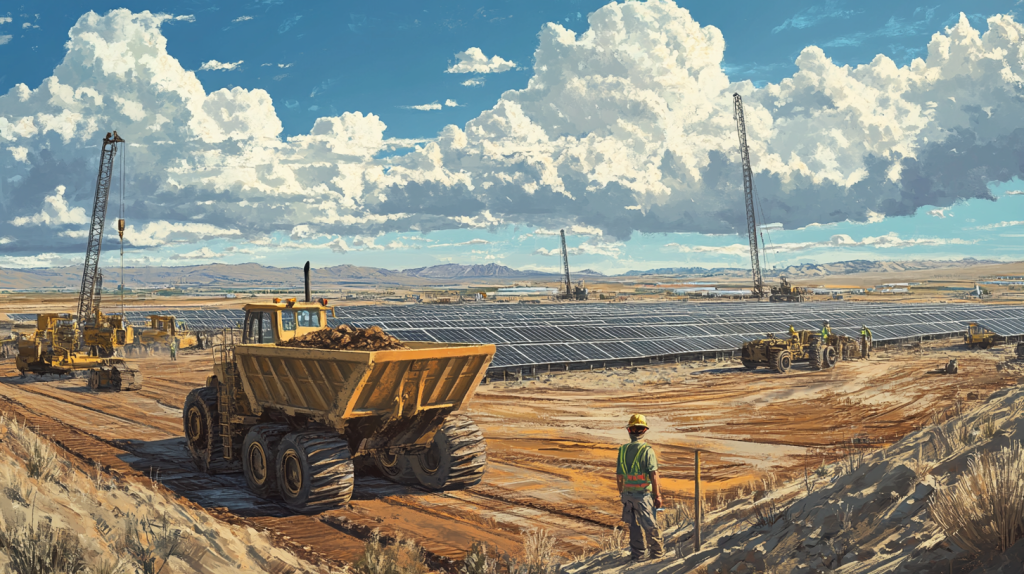
Optimizing Supply Chain and Logistics with AI in Solar Farm Construction
The sheer scale of solar farm projects demands careful coordination of materials, equipment, and labor. AI-powered logistics tools ensure timely material deliveries, optimize warehouse management, and prevent supply chain disruptions.
How AI-Driven Logistics Improve Solar Farm Deployment
- Material Tracking Systems – Monitor the movement of solar panels, inverters, and racking structures in real-time.
- Automated Delivery Scheduling – Ensures materials arrive just-in-time for installation, reducing onsite storage issues.
- Supply Chain Risk Analysis – Identifies potential bottlenecks and suggests alternative suppliers or delivery routes to prevent delays.
By leveraging AI for logistics and supply chain optimization, solar farm projects can avoid costly delays and ensure seamless material flow throughout the construction process.
The Role of Drones in Solar Farm Construction and Maintenance
Drones have become an essential tool in modern solar farm development, aiding in site surveying, construction monitoring, and ongoing maintenance. These aerial systems provide high-resolution imaging, thermal scanning, and real-time project insights, allowing teams to make informed decisions faster.
Key Applications of Drones in Solar Construction
- Land Assessment and Site Mapping – Drones perform detailed topographic surveys, ensuring optimal solar panel placement.
- Thermal Imaging for Quality Control – Identifies faulty or inefficient panels before installation completion.
- Automated Inspection & Maintenance – Detects panel defects, dirt accumulation, and electrical issues, improving long-term performance.
By integrating drones with construction and operations software, solar farm developers can enhance efficiency, reduce manual inspection costs, and extend asset lifespan.
Related Articles:
Floating Solar Power: Harnessing Water for the Future of Renewable Energy
Floating Solar Farms: How Offshore Photovoltaics Are Powering the Future of Clean Energy
Future Trends: AI and Robotics in the Next Generation of Solar Farms
The solar industry is rapidly evolving, with AI and robotics playing an even larger role in future projects. Emerging trends suggest greater automation, increased efficiency, and improved sustainability practices in large-scale solar development.
What’s Next for AI and Robotics in Solar Construction?
- Fully Automated Solar Farms – Future projects may use AI-controlled robotic fleets to handle panel installation, wiring, and maintenance.
- AI-Optimized Energy Storage Integration – Smart algorithms will improve battery storage efficiency and grid reliability.
- Predictive Maintenance with Machine Learning – AI will use historical performance data to predict equipment failures before they occur.
As AI and robotics continue to refine and accelerate solar farm construction, developers will benefit from faster deployment, lower costs, and improved energy output, ensuring the world’s growing power needs are met with cutting-edge solar technology.
FAQ
1. How does AI improve efficiency in solar farm construction?
AI is transforming solar farm construction by enhancing efficiency, accuracy, and decision-making throughout the project lifecycle. Traditionally, solar projects faced challenges related to scheduling delays, supply chain inefficiencies, and workforce coordination. AI addresses these pain points by automating processes and providing data-driven insights to optimize workflows.
One of AI’s biggest contributions is automated scheduling and resource allocation. AI-powered project management software can analyze historical data, predict potential delays, and adjust schedules in real time to keep construction on track. This predictive capability helps project managers anticipate weather disruptions, optimize material deliveries, and ensure crews are working at peak efficiency.
Another major benefit of AI is automated quality control. AI-powered drones and machine learning algorithms can analyze solar panel installations, detect defects, and ensure alignment with design specifications. This prevents costly errors and reduces the need for manual inspections, ultimately accelerating project timelines.
AI also improves supply chain logistics, ensuring that solar components—such as panels, inverters, and racking systems—arrive exactly when needed. Smart inventory management reduces the risk of overordering or understocking materials, preventing construction delays due to missing components.
By integrating AI into construction planning, real-time monitoring, and logistics, solar developers can reduce costs, minimize risks, and complete projects faster. As the demand for renewable energy grows, AI will continue to play a vital role in making solar farm construction smarter, more efficient, and more scalable.
2. What role do robotics play in large-scale solar farm installation?
Robotics is revolutionizing solar farm construction by automating repetitive tasks, reducing labor costs, and increasing installation speed. Given the scale of modern solar projects, where hundreds of thousands of panels must be installed across vast land areas, robotics helps improve efficiency, safety, and precision.
One of the most impactful robotic technologies in solar farm construction is automated pile-driving machines. These robots precisely position and secure the racking systems that support solar panels, significantly reducing manual labor requirements. By automating this process, developers can increase installation speed while maintaining structural integrity.
Another innovation is robotic panel placement and mounting systems. These machines can lift and align solar panels, ensuring they are positioned at the correct angle and securely fastened. This reduces strain on human workers and minimizes installation errors that could affect system performance.
Additionally, robotic trenching and cabling systems improve the efficiency of electrical infrastructure installation. These robots dig trenches for underground wiring and conduit placement, ensuring proper spacing and depth for safety and efficiency.
By using robotics for panel installation, racking setup, and electrical infrastructure, solar farms can be built faster, with fewer human errors, and at a lower cost. Robotics also improve worker safety, as fewer laborers are required to perform physically demanding and repetitive tasks. As robotic technology advances, we can expect even greater levels of automation in solar farm development.
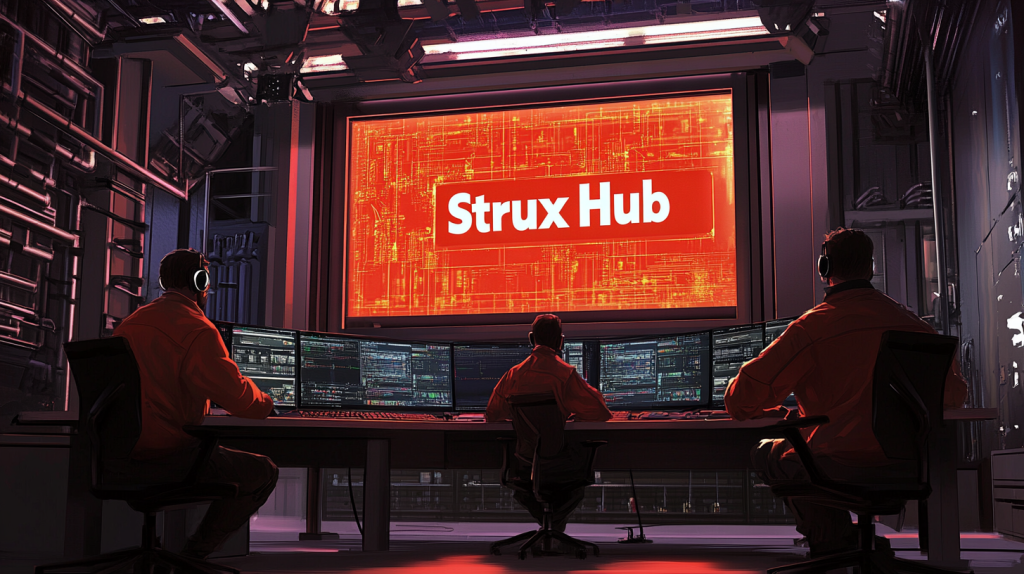
StruxHub
Experience the power of StruxHub today and witness firsthand how it can revolutionize your construction operations.
3. How do drones support solar farm construction and maintenance?
Drones have become indispensable tools in solar farm construction and maintenance, improving site planning, quality control, and long-term asset management. By providing high-resolution imaging, thermal scanning, and aerial mapping, drones help teams make faster, more informed decisions throughout the project lifecycle.
During the construction phase, drones assist with site surveys and land assessments, ensuring that the terrain is suitable for solar installations. Using LiDAR (Light Detection and Ranging) and photogrammetry, drones can generate 3D topographic maps, helping engineers optimize panel placement for maximum energy capture.
Drones also play a crucial role in quality control and inspection. Instead of relying on manual checks, drones equipped with thermal imaging cameras can detect faulty solar panels, overheating components, and improper wiring. This technology helps teams identify issues before they become costly failures, reducing maintenance expenses and downtime.
For long-term maintenance, drones enable automated inspection scheduling to monitor panel degradation, dirt accumulation, and electrical performance. Traditional inspections require labor-intensive manual reviews, whereas drones scan large areas quickly and with higher accuracy.
By integrating drones into solar farm construction and operations, developers can reduce inspection time, improve maintenance efficiency, and enhance overall performance monitoring. As drone technology evolves, we can expect even more advanced AI-driven diagnostics to further improve solar farm reliability and longevity.
4. What are the benefits of AI-powered logistics in solar construction?
AI-powered logistics solutions optimize material tracking, inventory management, and transportation planning in solar farm construction. Given the sheer scale of solar projects, managing the flow of solar panels, racking systems, inverters, and electrical components is a complex challenge. AI helps streamline procurement, storage, and delivery logistics, reducing waste, delays, and cost overruns.
One key benefit of AI-powered logistics is real-time inventory tracking. By integrating RFID tags and GPS tracking, AI systems can monitor the exact location of components, ensuring that materials are delivered and stored properly before installation. This prevents misplacement, overstocking, or missing materials, reducing project downtime.
Another advantage is automated delivery scheduling. AI can analyze weather patterns, road conditions, and supplier lead times to determine the most efficient transportation routes and schedules. This ensures that materials arrive exactly when needed, preventing storage issues and reducing handling costs.
AI also improves supply chain risk assessment, identifying potential disruptions and recommending alternative suppliers or routes. If a shipment is delayed due to global supply chain disruptions, AI can automatically adjust schedules and source backup inventory to keep construction on track.
By leveraging AI-powered logistics, solar developers can optimize material flow, reduce lead times, and enhance overall project efficiency, ensuring solar farms are completed on time and within budget.
5. What does the future of AI and robotics in solar energy look like?
The future of AI and robotics in solar energy is set to redefine efficiency, automation, and energy optimization. As technology advances, solar construction will become faster, more precise, and less reliant on manual labor, helping to meet the growing global demand for renewable energy.
One of the most promising developments is fully autonomous solar farm construction. AI-driven robots may soon handle every aspect of panel installation, from site preparation to final commissioning, reducing costs and minimizing human labor requirements. These advancements will allow solar farms to be built in record time, with fewer installation errors and improved structural integrity.
AI will also play a critical role in predictive maintenance and performance optimization. Machine learning algorithms will analyze solar panel efficiency data in real time, identifying degradation patterns and predicting when maintenance is required. This will extend panel lifespans, improve energy output, and reduce downtime.
Another exciting trend is AI-driven energy storage management. With the rise of battery storage solutions, AI will optimize when and how stored energy is used, ensuring that solar farms provide consistent power output, even during low-sunlight periods.
As AI and robotics continue to advance, solar energy will become cheaper, more scalable, and more reliable, paving the way for a cleaner, more sustainable energy future.
